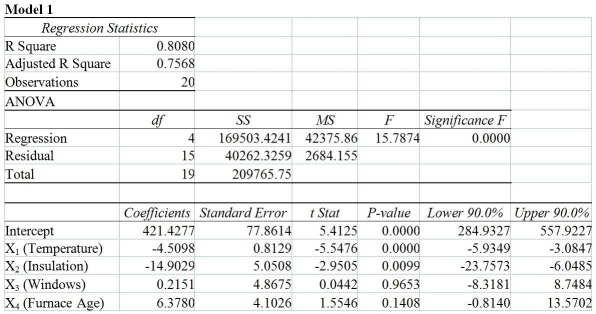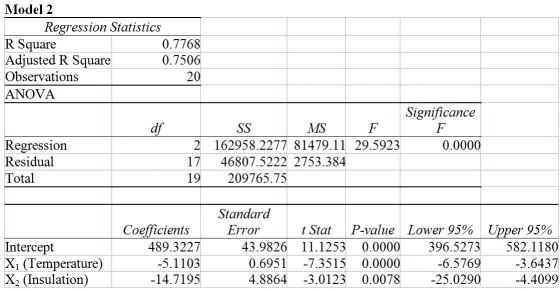TABLE 17-2
One of the most common questions of prospective house buyers pertains to the cost of heating in dollars (Y) .To provide its customers with information on that matter,a large real estate firm used the following 4 variables to predict heating costs: the daily minimum outside temperature in degrees of Fahrenheit (X1) ,the amount of insulation in inches (X2) ,the number of windows in the house (X3) ,and the age of the furnace in years (X4) .Given below are the EXCEL outputs of two regression models. 

-Referring to Table 17-2 and allowing for a 1% probability of committing a type I error,what is the decision and conclusion for the test H0 : β1 = β2 = β3 = β4 = 0 vs.H1 : At least one βj ≠ 0,j = 1,2,...,4 using Model 1?
Definitions:
Food Foraging
The act of searching for and exploiting food resources, common in hunter-gatherer societies before the advent of agriculture.
Farming Populations
Communities of people who primarily engage in agriculture to produce food and other crops.
Portal Doorway
An architectural element or metaphorical concept implying transition between distinct worlds, dimensions, or phases.
Stonehenge
A prehistoric monument in Wiltshire, England, made of a circle of standing stones.
Q6: Regarding methamphetamine use<br>A)its increase has had no
Q14: Referring to Table 18-5,a p control chart
Q16: Referring to Table 18-3,suppose the analyst constructs
Q19: Referring to Table 17-10 and using both
Q62: Referring to Table 17-10,Model 1,what is the
Q65: Referring to Table 18-4,suppose the supervisor constructs
Q87: Referring to Table 16-12,the best interpretation of
Q91: True or False: Referring to Table 17-12,there
Q229: True or False: Referring to Table 17-8,the
Q269: Referring to Table 17-7,if one is already